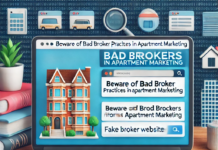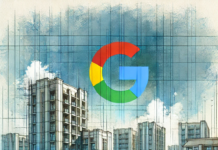There are many conveniences, like downloading movies in mere minutes, scheduling an Uber, or even ordering paper towels through Amazon’s Alexa device that today’s 4G LTE wireless networks have made possible. But there is a 5th generation of wireless networks in the horizon, known as 5G, that will advance wireless networking in ways we’ve never seen before. In fact, many companies are already using 5G technology today. AT&T, Verizon, Sprint, and T-mobile all launched preliminary 5G networks in a few major cities in the US this year and other locations are soon to follow. So, what impact can we expect 5G to have in the digital marketing landscape? The answer is still unclear, but the possibilities are seemingly endless and certainly exciting.
First off, what exactly is 5G?
5G stands for the 5th generation of cellular wireless networks that will ultimately replace the 4G LTE that we use today. Like 4G LTE, 5G uses radio frequency (RF) energy to transmit and receive data. However, the way 5G will use a higher frequency band of RF, called millimeter wave, promises three major improvements: massive throughput (the amount of data passing through a network) along with exponentially faster gigabit network speeds (100 to 250x faster, to be exact), a 30 fold reduction in latency (the time it takes for devices to communicate with each other over the network) to under 1 millisecond, and extreme connectivity (the ability to connect a whole lot more devices together – we’re talking billions).
What’s the big deal about 5G anyway?
It’s easy to discount the buzz surrounding this new technology, especially considering the 4G LTE connectivity we currently have is working pretty well for most of our daily needs. But 5G isn’t just a simple boost in how fast we can access a website or stream a video. It is set to completely transform the way we receive information and interact with the world around us. It’s also an essential element in realizing the true potential of the “Internet of Things” (IoT) – a network of connected digital devices that communicate with each other to transmit and collect data. 5G will allow vehicles to drive autonomously, provide doctors the ability to perform robot-controlled surgeries from anywhere in the world, and even pave the way for entire “Smart Cities” across the country.
And what does 5G mean for the future of digital marketing?
Now let’s look at the three ways 5G will improve networking as we know it and how that means huge opportunities for digital marketing, brands, and consumers alike.
Throughput and Speed
5G is touted as being able to process data at a far greater capacity and at a remarkably higher speed. An advanced mobile infrastructure also means that higher quality, interactive creative – specifically advanced augmented reality (AR) and virtual reality (VR) – will become mainstream. Any surface has the potential to become an interactive digital marketing ad platform and super-immersive marketing tactics, such as holographic brand demonstrations geared toward consumers’ individualized needs, will become the new norm.
Latency
Devices being able to respond to each other in 1 millisecond (or even less) is practically real-time. Content can move between companies and consumers and person to person at lightning-fast speeds. This will allow for uninterrupted sharing of information – like you’re having a conversation with the person next to you. Couple that with advances in AR and VR and companies will be able to tailor outreach on demand to both any person and any device allowing consumers to visualize their products in different settings. Zero lag time also means substantial gains in digital ad placement. Ads will include higher quality graphics, get delivered to more consumers with the reduced use of ad blockers, all the while costing less.
Connectivity
With more connected devices in the IoT – from automobiles to refrigerators to sensors on every surface (like roadways, sidewalks, or even factory floors) – a massive amount of data can be collected (thanks to the increased speed, throughput, and latency of 5G). This previously unobtainable data can be tracked, processed, and analyzed for insights about consumer habits, preferences, needs and wants. Digital marketers can create exceptionally relevant content for a prospective consumer at each stage in the buying journey, while making real-time optimizations to marketing campaigns based on additional data analysis and behaviors, effectively creating a seamlessly streamlined marketing system.
While the initial impact of 5G will be limited, in a few years we can expect big things from this new technology that is expected to revolutionize the future. Bottom line is, it’s time to gear up for a whole new reality in networking that is sure to transform the digital marketing industry and the entire world as we know it.





